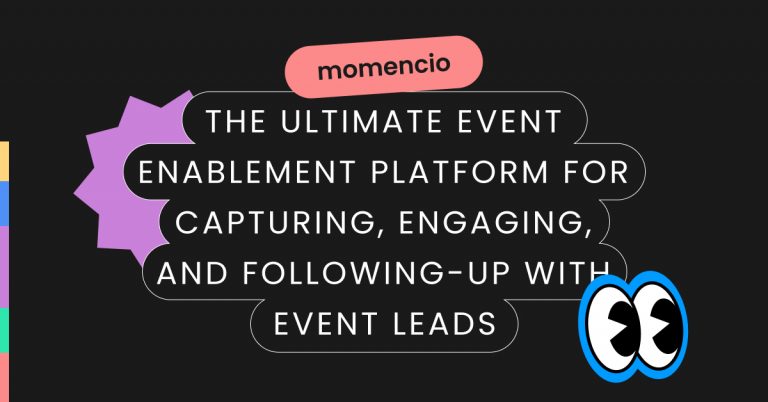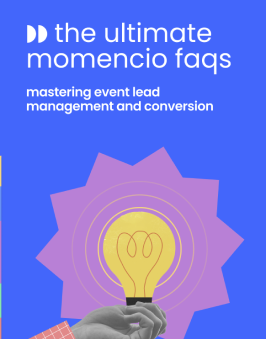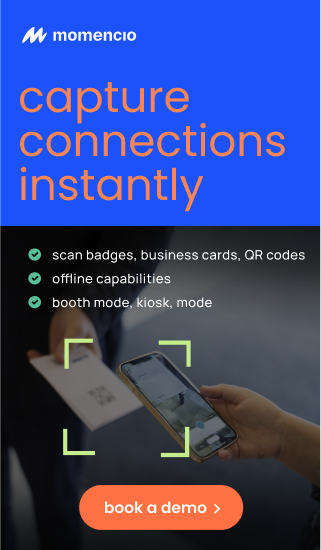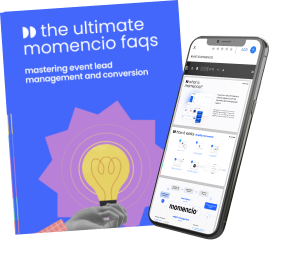Mastering essential planning skills is crucial for any event manager aiming to deliver seamless and impactful events. These skills not only ensure the smooth execution of each event but also significantly enhance attendee satisfaction and client relationships. In this article, we explore 15 vital skills that every event planner should develop to optimize their event outcomes and career success.
From organizational prowess to creative problem-solving, these skills cover a broad spectrum necessary for navigating the complex landscape of event management. Whether you are coordinating a large-scale conference or an intimate gathering, these skills are your building blocks to crafting memorable experiences that resonate with all participants.
By the end of this guide, you’ll have a toolkit of strategies to handle everything from initial planning to post-event follow-up, ensuring your events leave a lasting positive impact. Let’s dive into the essential planning skills that can transform your approach to event management, setting you apart in this dynamic industry.
Master These 15 Essential Planning Skills:
Organizational Skills in Event Management
Organizational skills are the cornerstone of successful event management. These skills enable planners to create a seamless flow from the initial concept to the final execution, ensuring every aspect of the event is perfectly aligned and executed on time. Here, we delve into three critical components of organizational skills: time management, resource allocation, and task prioritization.
Time Management
Effective time management is crucial for event planners, given the myriad tasks that need to be completed before, during, and after an event. Mastery in this area ensures that deadlines are met and each phase of the event planning process unfolds without unnecessary stress or last-minute rushes.
Strategies for Enhanced Time Management:
- Create Detailed Timelines: Develop comprehensive timelines that outline every step of the event planning process, from vendor contracts and venue bookings to attendee registration and post-event feedback collection.
- Use Technology: Leverage event management software that offers scheduling, reminders, and integration with other tools to keep everything on track.
- Delegate Tasks: Understand the strengths of your team and delegate tasks accordingly. This not only optimizes time but also ensures the most qualified individuals perform tasks.
Real-World Application: At a recent tech conference, the use of a detailed project timeline coupled with a mobile event management app helped the team monitor real-time progress and adjust schedules instantly when unexpected delays occurred.
Resource Allocation
Resource allocation involves the strategic distribution of budget, personnel, and materials to maximize the efficiency and impact of an event. Knowing where and how to allocate resources can significantly influence the event’s success and overall ROI.
Critical Aspects of Resource Allocation:
- Budget Management: Keep a close eye on spending, ensuring that you stay within budget while allocating funds to critical areas that enhance the attendee experience.
- Staff Utilization: Assign roles based on skills and experience, ensuring that all team members are effectively contributing to the event.
- Material Resources: Plan for adequate supplies, technology, and decor, considering both the necessities and the unexpected.
Example of Effective Resource Allocation: For a charity gala, resources were meticulously assigned to ensure high-impact areas such as guest speakers and venue decor were prioritized, which significantly enhanced the event’s appeal and effectiveness in fundraising.
Task Prioritization
Task prioritization is vital in event planning, where multiple tasks demand attention simultaneously. Prioritizing effectively ensures that critical deadlines are met and that the essential elements of the event receive the focus they require.
Techniques for Prioritizing Tasks:
- Identify Urgency and Importance: Use a matrix to classify tasks based on their urgency and importance, focusing first on those that are both urgent and important.
- Review and Adjust Regularly: Regularly review priorities to adjust for new tasks or changes in the event scope.
- Communicate Priorities: Ensure that all team members are aware of current priorities and any changes to them, to maintain alignment and efficiency.
Practical Implementation: During a multi-day festival, prioritization was key in handling unforeseen weather issues. Emergency protocols were enacted swiftly because they were ranked high on the priority list, ensuring the safety and continuity of the event.
Communication Skills in Event Management
Effective communication is pivotal in event management, serving as the glue that holds all stages of event planning and execution together. Strong communication skills ensure clear and concise exchanges between all parties involved—team members, vendors, clients, and attendees—facilitating a well-coordinated event. Here, we explore essential aspects of communication skills necessary for every event planner: clarity and conciseness, active listening, and effective feedback mechanisms.
Clarity and Conciseness
In the fast-paced environment of event planning, messages need to be clear and concise to prevent misunderstandings and errors. Effective communication ensures that everyone, from the team members to the suppliers and participants, understands their roles, responsibilities, and the expectations set forth.
Strategies for Clear and Concise Communication:
- Develop Clear Guidelines: Use simple, direct language in all written and verbal communications. Only jargon if all stakeholders commonly understand it.
- Use Visuals Where Appropriate: Incorporate diagrams, schedules, and charts in briefings to clarify complex schedules or layouts.
- Regular Briefings: Hold regular meetings or conference calls to ensure all parties are aware of any updates or changes.
Real-World Application: At a large-scale international conference, daily briefings with core team leaders were crucial. These briefings included concise summaries of the day’s objectives and immediate priorities, ensuring alignment across various departments.
Active Listening
Active listening involves fully concentrating, understanding, responding, and then remembering what is being said. For event planners, this skill is vital to accurately gauge the needs and concerns of clients and team members and to ensure that these needs are met effectively.
Critical Components of Active Listening:
- Encourage Open Dialogue: Create an environment where team members and clients feel comfortable voicing concerns and suggestions.
- Ask Probing Questions: Use questions to delve deeper into issues or to clarify points, ensuring you fully understand the stakeholder’s needs and expectations.
- Summarize and Reflect: Regularly paraphrase or summarize what others have said to confirm understanding.
Example of Active Listening: During the planning phase of a charity auction, listening to the concerns of stakeholders about item placement and bidding procedures led to adjustments that significantly improved the flow and success of the auction.
Feedback Mechanisms
Implementing effective feedback mechanisms is crucial for continuous improvement and for addressing any issues promptly. Feedback helps refine event planning processes and enhances the overall experience for all participants.
Effective Feedback Techniques:
- Surveys and Questionnaires: Deploy post-event surveys to gather attendee and stakeholder feedback on various aspects of the event.
- Follow-up Meetings: Conduct debriefing sessions with your team and key vendors to discuss what went well and what could be improved.
- Open Feedback Channels: Maintain open lines of communication throughout the event lifecycle, allowing for ongoing suggestions and observations.
Practical Implementation: For an annual tech summit, implementing a real-time feedback system via a mobile app allowed the event team to address attendee issues on the spot, such as session room changes or AV problems, enhancing the attendee experience.
While event management is fraught with challenges, the keys to overcoming them lie in strategic planning, leveraging technology, and focusing on attendee engagement. By adopting a solution-oriented approach to common hurdles, event professionals can elevate their events, ensuring memorable experiences for attendees and tangible results for organizers and sponsors alike.

Networking Skills in Event Management
Networking skills are indispensable in the field of event management, where building and maintaining a robust professional network can lead to successful events and long-term career growth. Effective networking involves more than just exchanging business cards; it requires strategic relationship building, leveraging connections, and utilizing these relationships to benefit both current and future events. This section will explore the core aspects of networking skills necessary for every event planner: building relationships, leveraging connections, and employing networking strategies for event success.
Building Relationships
The foundation of effective networking in event management is the ability to build lasting relationships with a diverse array of individuals, including vendors, sponsors, peers, and attendees. These relationships are built on trust, mutual respect, and a clear understanding of mutual benefits.
Strategies for Building Strong Relationships:
- Engage Regularly: Maintain regular contact with your network through social media, emails, and face-to-face meetings, not just when you need something.
- Provide Value: Always look for ways to provide value to those in your network, whether by offering your expertise, sharing relevant information, or connecting them with others.
- Be Genuine: Approach each interaction with authenticity and sincerity. Genuine interest in others fosters more robust, more meaningful connections.
Real-World Application: At a regional marketing conference, an event planner organized a networking brunch that included interactive activities designed to break the ice and foster genuine connections among attendees. This not only enhanced the event experience but also solidified long-term professional relationships.
Leveraging Connections
Once relationships are established, knowing how to leverage these connections to facilitate event success effectively is crucial. This involves understanding the strengths and resources of your network and how they can be mutually beneficial.
Key Aspects of Leveraging Connections:
- Match Needs with Resources: Identify the needs of your event and match these with the capabilities within your network. For example, if you require a technology partner, tap into your network for reputable suppliers or sponsors.
- Collaborate for Mutual Benefit: Look for opportunities where collaboration with network contacts can lead to benefits for all parties involved, such as co-hosted events or shared marketing efforts.
- Reciprocity: Ensure that the relationship is reciprocal by supporting the business goals of your connections whenever possible.
Example of Effective Connection Leveraging: An event planner utilized their network to secure a well-known industry leader as a keynote speaker, which not only drew more attendees but also enhanced the speaker’s visibility in new markets.
Networking Strategies for Event Success
Implementing effective networking strategies can significantly enhance both the planner’s and the attendees’ event experiences. It’s about creating opportunities for meaningful interactions that lead to professional growth and business opportunities.
Techniques for Enhancing Networking at Events:
- Structured Networking Sessions: Design specific times and spaces for networking, such as speed networking sessions or themed discussion groups, which facilitate targeted interactions.
- Utilize Technology: Employ event apps that allow attendees to connect, schedule meetings, and interact online before, during, and after the event.
- Encourage Participant Interaction: Create environments that encourage spontaneous interactions, such as interactive workshops or collaborative projects.
Practical Implementation: During a national sales expo, the event team introduced a mobile app feature that allowed attendees to scan QR codes on badges to save contact information and notes. This tool significantly increased post-event follow-up and interaction among participants.
Client-First Approach in Event Management
Adopting a client-first approach is crucial for event planners who aim to deliver personalized, successful events that meet or exceed client expectations. This strategy focuses on understanding and prioritizing the client’s needs, customizing event experiences accordingly, and maintaining strong client relationships throughout the event lifecycle. Let’s explore the key elements of a client-first approach: understanding client needs, customizing event experiences, and maintaining client relationships post-event.
Understanding Client Needs
The first step in a client-first approach is to thoroughly understand what the client hopes to achieve through their event. This involves deep listening, asking the right questions, and sometimes anticipating needs that the client may not have explicitly expressed.
Strategies for Understanding Client Needs:
- Initial Consultations: Conduct in-depth initial consultations to gather as much information as possible about the client’s vision, objectives, and specific requirements for the event.
- Regular Check-ins: Schedule regular meetings or calls to update the client on progress and clarify any evolving needs or changes in their vision.
- Feedback Loops: Implement a system where feedback is continually solicited and acted upon throughout the planning process, ensuring that the event aligns with the client’s expectations at every stage.
Real-World Application: For a corporate retreat, an event planner utilized detailed questionnaires combined with personal interviews to capture the specific goals and preferences of the company’s executive team, ensuring that the event was tailored uniquely to their corporate culture and objectives.
Customizing Event Experiences
Once the client’s needs are understood, the next step is to tailor the event experience to meet these needs precisely. This can include customizing themes, activities, menus, and even the technology used to create an event that feels personally crafted for the client and their guests.
Key Aspects of Customizing Event Experiences:
- Personalized Themes and Decor: Design the event’s theme and decor around the client’s brand or personal taste, making the setting unique and relevant.
- Targeted Content and Programming: Develop the event’s content and schedule around the outcomes the client wants, such as team-building activities for a corporate event or custom workshops for educational conferences.
- Technology Integration: Utilize event technology that enhances the guest experience, such as personalized event apps or interactive voting systems, aligning with the client’s engagement goals.
Example of Event Customization: At a high-profile charity gala, the event planner integrated augmented reality elements that allowed guests to see the direct impact of their donations through interactive displays, significantly enhancing engagement and contribution levels.
Maintaining Client Relationships Post-Event
A client-first approach doesn’t end when the event does. Maintaining solid relationships post-event is crucial for ensuring client satisfaction and fostering long-term partnerships.
Techniques for Maintaining Client Relationships:
- Post-Event Follow-Up: Send a thank-you note or email summarizing the event’s successes and requesting feedback on areas for improvement.
- Results and Reporting: Provide detailed reports on attendee engagement, budgeting, and other metrics that demonstrate the ROI and success of the event.
- Ongoing Communication: Keep the lines of communication open with periodic updates on new services, insights into industry trends, or early invitations to future events.
Practical Implementation: After organizing a successful product launch, an event planner scheduled quarterly check-ins with the client to discuss upcoming event needs and potential improvements, solidifying a lasting professional relationship and recurring business opportunities.
Problem-solving Skills in Event Management
Problem-solving skills are essential for event planners to navigate the inevitable challenges and unexpected issues that arise during the planning and execution of events. Being able to identify potential problems, devise creative solutions, and implement them efficiently ensures the event progresses smoothly and meets its objectives. This section will explore the critical components of problem-solving in event management: identifying potential issues, creative problem resolution, and crisis management.
Identifying Potential Issues
The first step in effective problem-solving is the ability to foresee potential issues before they arise. This proactive approach allows event planners to develop contingency plans and take preventive measures.
Strategies for Identifying Potential Issues:
- Risk Assessment: Conduct thorough risk assessments at the planning stage to identify possible logistical, technical, or vendor-related issues.
- Experience and Insights: Utilize past experiences and industry knowledge to anticipate common pitfalls and challenges specific to the type of event being planned.
- Stakeholder Feedback: Engage with all stakeholders, including vendors, venue staff, and clients, to gather insights on any potential challenges they foresee based on their expertise and experience.
Real-World Application: In preparing for an outdoor music festival, an event planner conducted a detailed site inspection during different weather conditions to anticipate issues related to site accessibility, crowd control, and stage setup, leading to comprehensive planning for various weather scenarios.
Creative Problem Resolution
Once potential issues are identified, the ability to creatively solve problems becomes invaluable. This involves thinking outside the box and coming up with innovative solutions that ensure the event’s objectives are still met, even when deviations from the original plan are necessary.
Key Aspects of Creative Problem Resolution:
- Brainstorming Sessions: Regularly schedule brainstorming sessions with your team to develop creative solutions to any identified risks or issues.
- Leverage Technology: Utilize the latest event technology solutions to address challenges such as attendee engagement or real-time communication needs.
- Vendor Collaboration: Work closely with vendors to explore alternative options or backup plans for critical components like catering or audio-visual equipment.
Example of Creative Problem Solving: Faced with a sudden venue cancellation, an event planner quickly negotiated with a nearby venue that had previously been considered and leveraged virtual reality tours to reassure the client and attendees of the new space’s suitability and layout without needing an in-person visit.
Crisis Management
Despite the best plans, crises can still occur during events. Effective crisis management involves remaining calm under pressure, communicating clearly, and taking decisive action to resolve the situation.
Techniques for Effective Crisis Management:
- Crisis Communication Plan: Develop and train your team on a clear crisis communication plan that includes predefined roles and responsibilities, communication channels, and key messages.
- Emergency Preparedness: Ensure all staff are trained in basic emergency response protocols, including evacuation routes, first aid procedures, and the use of emergency equipment.
- Real-time Problem Solving: Be prepared to make quick decisions and adjustments based on the nature of the crisis, always prioritizing the safety and well-being of all attendees.
Practical Implementation: During a large conference, a power outage disrupted presentations and workshops. The event team, having a backup generator and pre-prepared manual systems, quickly restored essential services and adjusted the schedule to allow for minimal disruption, effectively managing the situation and maintaining the event flow.
Creativity in Event Planning
Creativity is a crucial element in the field of event planning, enabling professionals to design unique, memorable experiences that stand out. Whether it’s through innovative themes, engaging content, or unexpected elements, creativity helps to captivate and delight attendees while fulfilling the event’s objectives. This section explores the importance of creativity in event planning, focusing on innovating event themes and formats, integrating engaging and unique elements, and examining some case studies that highlight creative solutions in action.
Innovating Event Themes and Formats
Creativity in event themes and formats allows planners to break away from conventional models and offer fresh, exciting experiences that resonate more profoundly with attendees.
Strategies for Innovative Themes and Formats:
- Thematic Cohesion: Develop a strong, central theme that aligns with the client’s brand or the purpose of the event. This theme should weave through every aspect of the event, from the decor to the activities and presentations.
- Interactive Formats: Move beyond traditional presentation styles by incorporating interactive sessions, such as workshops, breakout sessions, or even gamification elements that encourage participation and engagement.
- Unexpected Venues: Choose unconventional venues that add an element of surprise and can be thematically tied to the event, enhancing the overall experience.
Real-World Application: A tech conference adopted a “future of technology” theme, utilizing a venue known for its innovative architecture and incorporating elements like virtual reality stations and interactive tech demos that allowed attendees to experience the future firsthand.
Engaging and Unique Event Elements
Adding unique and engaging elements to an event not only ensures memorability but also significantly enhances attendees’ satisfaction by providing them with a novel experience.
Key Aspects of Engaging Event Elements:
- Personalized Experiences: Offer personalized options for attendees, such as custom swag items or interactive, personalized digital content accessible through mobile apps.
- Visual and Sensory Impact: Employ state-of-the-art AV technology to create immersive audio-visual experiences or use unique lighting and soundscapes to set the mood and tone of the event.
- Socially Interactive Installations: Incorporate installations that not only serve as focal points but also encourage social interaction, such as photo booths with themed props or interactive art displays.
Example of Unique Event Element Implementation: At an annual gala, planners introduced an “enchanted forest” theme with live interactive performances by artists dressed as woodland creatures, augmented reality paths that told different forest stories, and themed food and drink stations that complemented the immersive experience.
Adapt to Changes in Event Planning
Adaptability is a crucial skill for event planners, as the dynamic nature of events often requires quick thinking and flexibility to manage unexpected changes and challenges effectively. Being able to adapt ensures that an event can still reach its goals despite potential disruptions, such as weather issues, technology failures, or last-minute client requests. This section explores how event planners can cultivate adaptability through monitoring event trends, flexibility in planning, and adapting strategies in real time.
Monitoring Event Trends
Staying current with industry trends is vital for event planners to remain adaptable. This includes understanding new technologies, shifting attendee expectations, and evolving standards in event safety and sustainability.
Strategies for Monitoring Trends:
- Industry Publications and News: Regularly follow industry blogs, magazines, and news sites to stay informed about the latest trends in event planning.
- Conferences and Workshops: Attend industry conferences and workshops to gain insights from other professionals and see new ideas in action.
- Feedback and Surveys: Utilize attendee and client feedback to gauge shifting preferences and expectations, which can inform future event strategies.
Real-World Application: An event planner noticed an increasing preference for hybrid events in industry publications. They adapted by incorporating virtual participation options in their upcoming conferences, thus expanding their reach and inclusivity.
Flexibility in Planning
Flexibility in the planning phase involves creating structures that allow for adjustments. This can be crucial when dealing with variables such as venue availability, speaker schedules, or budget changes.
Critical Aspects of Flexible Planning:
- Contingency Plans: Develop robust contingency plans for various aspects of the event, including weather-related issues, technology backups, and vendor no-shows.
- Scalable Solutions: Design event elements that are scalable, allowing for adjustments in size or scope based on final attendee numbers or changing client requirements.
- Open Communication Channels: Maintain open lines of communication with all stakeholders, including clients, vendors, and team members, to quickly address and adapt to changes as they arise.
Example of Flexible Planning: During a significant outdoor event, the event planner established alternative indoor venues in case of inclement weather. When unexpected rain occurred, the event was smoothly transitioned indoors with minimal disruption to the schedule.
Adapting Strategies in Real-Time
The ability to make real-time adjustments is the most critical aspect of adaptability in event planning. This skill ensures that planners can respond immediately to issues, maintaining the quality and continuity of the event.
Techniques for Real-Time Adaptation:
- On-Site Problem Solving: Empower on-site staff with the authority and tools needed to make immediate decisions. This can include handling unexpected guest needs or resolving minor setup issues.
- Technology Utilization: Use real-time communication and management tools such as event apps and walkie-talkies to stay connected with team members during the event.
- Post-Event Adjustments: Be prepared to make post-event adjustments based on real-time feedback, such as changing the timing of sessions or the layout of networking areas to improve flow and engagement.
Practical Implementation: At a tech conference, when a key speaker’s flight was delayed, the planner quickly rearranged the schedule, moving a panel discussion forward and using the app to notify attendees of the change in real time, ensuring the day proceeded smoothly without significant gaps.
Be Flexible in the Execution of Event Planning
Flexibility in execution is a defining trait of a skilled event planner. It’s about responding to the unexpected with composure and decisiveness, ensuring the event remains on track. Flexibility involves dealing with unforeseen changes, adjusting plans on the go, and learning from each event to improve future executions. Here’s how event planners can exhibit flexibility during the execution of their events.
Dealing with Unexpected Changes
Events are live productions, and despite meticulous planning, unexpected changes can occur. Flexibility allows event planners to handle these situations effectively without compromising the overall event experience.
Strategies for Dealing with Unexpected Changes:
- Maintain a Calm Demeanor: Stay calm when unforeseen changes occur. A composed planner instills confidence in both the team and the attendees.
- Rapid Response Plans: Have rapid response plans in place for various scenarios. Quick decision-making is crucial when time-sensitive issues arise.
- On-the-Fly Creativity: Be ready to think creatively and use available resources to solve problems that arise unexpectedly.
Real-World Application: When a main session at a conference was abruptly interrupted due to a technical glitch, the event planner quickly engaged the audience with an impromptu Q&A session with the speaker. At the same time, the issue was resolved, turning a potential disruption into an interactive opportunity.
Adjusting Plans on the Go
The ability to adjust plans while an event is underway is vital. This skill ensures that the event adapts to the needs and dynamics of the moment, providing the best possible experience for all involved.
Critical Aspects of On-the-Go Adjustments:
- Dynamic Scheduling: Keep schedules flexible enough to accommodate last-minute changes without causing significant disruptions.
- Empowered Staff: Ensure that staff are well-trained and empowered to make minor adjustments without needing to consult the planner for every decision.
- Backup Activities: Prepare a set of backup activities or content that can be quickly deployed if gaps in the schedule emerge.
Example of Adjusting on the Go: An unexpected delay in a workshop led to a gap in the event schedule. The planner filled this gap by showcasing a local musician who had previously planned to perform as a surprise act for the end of the event, providing entertainment and maintaining the energy of the attendees.
Examples of Flexible Event Executions
Drawing from real events, we can see flexibility in execution in action. These examples highlight the importance of being able to pivot and adapt as situations change.
Ensuring a Positive Impact in Event Planning
For event planners, the ultimate goal is to create a lasting positive impact with each event—on the attendees, the client, and the broader community. This not only refers to the immediate experience but also to the enduring memories and connections that can influence future behaviors and decisions. Here’s how event planners can focus their efforts to ensure each event has a lasting positive impact.
Measuring Event Success
To ensure a positive impact, it’s essential to measure the success of an event against the set objectives and goals. This involves collecting and analyzing data to understand what worked and what didn’t, allowing for improvement in future events.
Strategies for Measuring Event Success:
- Define Success Metrics: Before the event, clearly define what success looks like in measurable terms. This might include the number of attendees, net promoter scores, or revenue generated.
- Data Collection: Employ various tools and methods to collect data on attendee engagement, satisfaction, and overall experience.
- Post-Event Analysis: Analyze the collected data to assess whether the event met its goals and identify areas for improvement.
Real-World Application: At a fundraising gala, success was measured not just by the funds raised on the night but also by the number of new long-term donors who committed to the cause, representing the event’s lasting impact on the organization’s funding.
Post-Event Analysis
A thorough post-event analysis is critical to understanding the event’s overall impact and to planning future events with similar or improved outcomes.
Key Aspects of Post-Event Analysis:
- Surveys and Feedback: Conduct surveys with attendees, clients, and vendors to gather comprehensive feedback on various aspects of the event.
- ROI Evaluation: Calculate the return on investment for the client, including both quantitative measures like sales or leads generated and qualitative measures like brand exposure.
- Debriefing Sessions: Hold debriefing sessions with the event team to discuss what worked well and what challenges were faced, allowing for shared learning experiences.
Example of Post-Event Analysis: Following a product launch, the event team reviewed the media coverage, social media engagement, and direct feedback from attendees to evaluate the brand impact and consumer interest generated by the event.
Continuous Improvement Strategies
A commitment to continuous improvement ensures that every event is an opportunity to learn and enhance the overall quality and impact of future events.
Techniques for Continuous Improvement:
- Benchmarking: Set benchmarks based on past events or industry standards to gauge performance and set targets for future events.
- Training and Development: Invest in training for the event team, focusing on areas identified as needing improvement during post-event evaluations.
- Innovation Implementation: Continuously look for innovative ideas and practices that could be implemented to enhance future events and create a more significant impact.
Practical Implementation: An annual technology conference saw improvements year-over-year by incorporating new interactive technologies based on attendee feedback, resulting in increased engagement and a more impactful event experience.
Conclusion
Mastering essential planning skills is a journey that transforms ordinary events into unforgettable experiences. By honing organizational and communication skills, leveraging networking, maintaining a client-first approach, and employing creativity and adaptability, event planners can navigate the complexities of any event with finesse. The commitment to solving problems and ensuring a positive impact is what makes an event planner not just a coordinator but a visionary.
From the initial spark of an idea to the final applause, the event planner’s role is pivotal. They orchestrate the symphony of logistics, people, and places that come together in harmony. This article has delved into the very skills that make such orchestration possible, providing a roadmap for professionals who are dedicated to elevating their craft.
Are you ready to take your event planning to the next level? Embrace the power of momencio’s event management tool to streamline your processes, enhance attendee engagement, and maximize the ROI of your events. With features designed to empower planners with critical insights and seamless execution, momencio is your partner in transforming every event into a standout success.
Reach out today, book a demo, and see how momencio can revolutionize your approach to event planning.
10 FAQs on Essential Event Planning Skills
- What are the most important organizational skills for event planners?
- The most important organizational skills include time management, resource allocation, and task prioritization. Mastery of these skills ensures efficient planning and execution, preventing costly oversights and last-minute scrambles.
- How can event planners improve their communication?
- Event planners can improve communication by practicing active listening, ensuring clarity and conciseness in their messaging, and establishing robust feedback mechanisms to refine the event planning process continually.
- Why are networking skills crucial in event management?
- Networking skills are crucial because they enable event planners to build relationships with a variety of stakeholders, leverage these connections for event success, and ensure access to the best resources, information, and support.
- What does a client-first approach entail in event planning?
- A client-first approach involves deeply understanding and prioritizing the client’s needs and preferences, customizing the event experience to meet those needs, and maintaining solid relationships before, during, and after the event.
- Can you provide an example of problem-solving in event planning?
- An example of problem-solving could be the quick adaptation to a power outage during an event by moving sessions to naturally lit areas and using backup generators to power essential equipment.
- How can event planners demonstrate creativity in their work?
- Event planners can demonstrate creativity by innovating with event themes and formats, incorporating unique and engaging elements, and personalizing experiences to create memorable and impactful events.
- What does being adaptable mean for an event planner?
- Being adaptable means having the ability to respond to unexpected changes and challenges swiftly, adjusting plans and strategies in real time to ensure the event’s success.
- How do event planners ensure a positive impact on their events?
- Planners ensure a positive impact by setting clear success metrics, collecting and analyzing post-event data, and implementing continuous improvement strategies for future events.
- How can event planning tools like momencio enhance an event planner’s skills?
- What should event planners do if a critical speaker cancels at the last minute?
- Event planners should have a backup plan in place, such as a standby speaker list, the ability to quickly rearrange the agenda, or the option for the speaker to present remotely. Effective communication and quick action are key to managing such situations.
Interesting Facts from Event Planning Research
- The Global Events Industry was valued at approximately $1,100 billion in 2018 and is expected to grow to nearly $2,330 billion by 2026, showing the increasing importance and investment in event planning [Allied Market Research]
- Post-event surveys reveal that 85% of corporate leaders view in-person events as critical for their company’s success, highlighting the value placed on face-to-face interactions [ Harvard Business Review].
- Research suggests that live networking events boost deal closure rates by up to 40%, underscoring the significant ROI that can be achieved with well-executed event planning [ Event MB, The ROI of Networking Events]
- A study on event technology shows that using event software can lead to a 20% increase in attendance while decreasing costs by up to 30%, demonstrating the efficiency benefits of digital tools [Frost & Sullivan, Meetings and Events Industry]
- Sustainable event practices are becoming more prevalent, with 90% of event planners considering environmental sustainability to be a priority when organizing events [MeetGreen, 2021 Sustainable Event Trends]
- The use of AI in event planning is on the rise, with a prediction that by 2023, AI-driven personalization will be a standard feature in over 70% of virtual event management software [Gartner, Market Guide for Event Technology Platforms]
- The average no-show rate for events is around 10-20%, indicating the importance of accurate forecasting and contingency planning in event management [Event MB, The Event Planning Guide to Attendee No-Shows]
- Data analytics is playing a growing role in event planning, with 75% of event planners reporting that they require better data-driven decision-making capabilities from their event management platforms [Eventsforce, Event Planner Insights Report]















